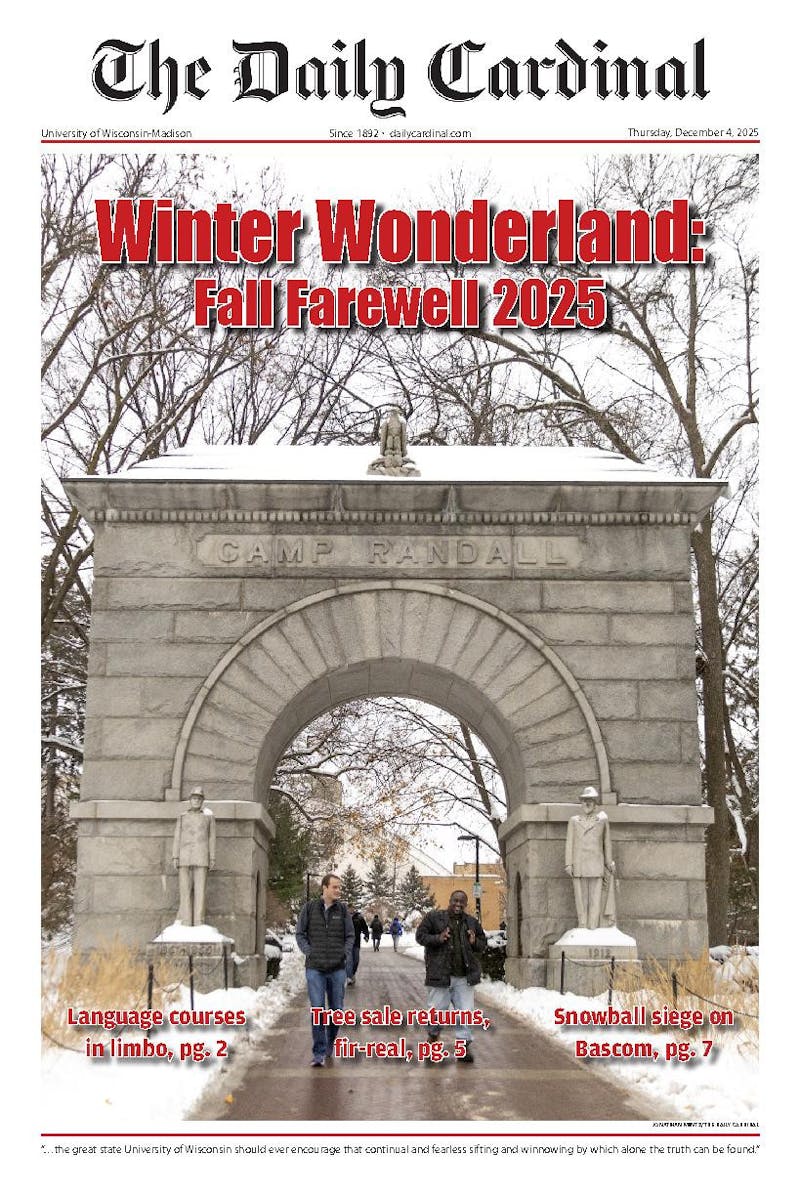The recent spike in fuel costs has homeowners scrambling this winter to cover the expected rise in heating bills; but as to exactly how these high fuel costs will affect the UW-Madison campus, not much, if anything, is known.
'How much money this will cost us this year, well, I don't know yet, 'said John Harrod, Physical Plant director. 'We're working on projections, trying to get a good handle on what that cost would be. Gas costs have gone up significantly; coal is going up some but not as fast, and when we spread that over the whole there will be an increased cost, but what that cost is, well, I hate to give you a number because I don't know yet.'
Heating costs have been rising ever since Hurricane Katrina battered the Gulf of Mexico in late August. Natural gas has jumped from $6 to $13 per million BTUs and the cost per barrel of crude oil has hovered around $60, due in part to the supply disruptions linked to the recent hurricanes.
Utilities and the federal government warned homeowners of the expected increases, which may top 69 percent nationwide, according to the Energy Information Administration, and could spike as high as 60 percent in Wisconsin.
The University is prepared to curb the rising fuel costs. Already, the UW Physical Plant, which oversees the management of campus buildings, uses a variety of fuels to provide heat to the campus. Power plants burn coal, recycled wood pellets, oil and natural gas, and this mix of fuels will allow the Physical Plant to soften the blow of natural gas and oil costs this winter.
'Because we have mixed fuel and burn coal as well as natural gas, we should not experience a 60 percent increase in overall cost,' Harrod said.
Due to an unseasonably warm October, the Physical Plant has not seen the full effects of the price increases yet. Many buildings on campus were air-conditioned until a few weeks ago, which cut down on overall costs. Heating systems are also controlled remotely, which allows the Physical Plant to turn the heat on and off earlier in the evening.
The Physical Plant has also discussed ongoing programs that could cut down on energy consumption with UW residence halls, and, according to both Harrod and Michael Kinderman, assistant director of University Housing, the key is keeping windows closed.
'One of the biggest things is making sure the windows are closed in the dorms,' Harrod said. 'When a window's open ... there's a lot of energy that goes out that window. Once we have that under control and in control, then we have a better handle on overall management of heat gain and loss.'
The UW residence halls have enacted a Master Plan that will involve completely renovating the heating, ventilation and air cnditioning in the dorms, and replace the steam heat that warms most of the older dorms on campus with hot water heat. The Master Plan, which runs through 2019, also calls for the replacement of the least energy-efficient buildings, such as Ogg Hall, with newer, more efficient ones.
'We can always save some money, and have been doing so for some time,' Kinderman said. 'These are all huge projects, and that's why we have to plan these out for many years.'
Kinderman stressed that students have very limited control over how hot the residence halls get. Housing is not necessarily going to students and asking them to control the heat, he said.
'Natural gas is certainly going to go up,' Kinderman said. 'How much will it cost the university? Well, that depends on how well it's managed.'





